Blog Archives
Home -
Posts tagged "trans-humanist"
Fish farming has been getting away with a low profile when it comes to animal rights for too long. The debate about whether it’s OK to eat animals that “can’t feel pain,” is one reason fish don’t get a lot of attention. The right of fish to live free in their natural habitats has thus far been hijacked by the excuse that has been used about other sentient beings, that fish are automatons humans should be allowed to kill and torture. There is also the false belief that fish farming is somehow better for the environment than wild fishing. Both of these arguments for fish farming have been widely refuted.
The scale of industrial fish farming has ramped up in recent decades to the point where fish farms resemble the industrial killing fields of large scale chicken farming and other industrial meat farming. The conditions fish suffer in fish farms are miserable and painful. Fish farms are often overcrowded and fish suffer from diseases. Poor water quality compromises fishes’ immune systems, chemicals used to treat fish infestations sicken fish, and over-crowded fish are vulnerable to aggression from other fish. Just as with industrially farmed chickens, fish are bred to grow faster and bigger leading to health problems like abnormal heart shape and cataracts.
Also, increasingly, fish are fed on the bodies of other wild caught fish. A recent report found that one fifth of all wild caught fish are fed to farmed fish. Human fish production is a “fish eat fish” world, and there is no mercy for the fish whether they are caught in the wild or on farms. Fish in the wild suffer hours of suffocation on the decks of fishing trawlers before they die, while fish in farms suffer lives of pain and discomfort and the inability to perform the natural behaviors they would in the wild.
Also, it’s been definitively proved that fish do have feelings and feel pain. Fish have nociceptors which detect and respond to threatening and damaging stimuli. They have also been shown to have brain activity in response to events that are potentially painful – what we would call fear. When fish are in pain they are distracted, and less able to function. They even rub themselves against surfaces to alleviate the pain, as humans would do.
The more different the animal, the less easy it is for humans to relate to them. This has been used to cover up the reality that animals with different systems are still autonomous beings who experience their world as dynamically as we do and can suffer or thrive. Cruelty to fish should no longer be allowed to hide behind the fact that they are different from us. Fish are less well understood beings that humans have decided to enslave and exploit. Fish farms are showing us the scale of our exploitation and cruelty, and why fish need to be liberated from human exploitation and enslavement.
Please visit FishFeel.org to learn more about advocating for fish: https://fishfeel.org/
Read More about fish farming: https://www.vox.com/future-perfect/22301931/fish-animal-welfare-plant-based
Higher intelligence in animals, the ability to know your own thoughts and have self-consciousness is traditionally thought to be rare and mostly confined to humans. Humans have made this assumption for one simple reason which turns out to be, actually, not that smart. The reason many animals, such as birds, have been assumed not to have the higher intelligence of humans is that the six layered structure of the neocortex or forebrain is believed to be what gives humans, above all animals, intelligence and a sense of self. However, new research shows that pigeons and barn owls have neurons connected at right angles creating columns of connected neurons. The conclusion is that it doesn’t matter what structure is formed, super connectivity in a highly active part of the brain is likely the thing that gives rise to higher intelligence, not a particular “type” of brain.
Crows have a particularly large fore-brain and have long been known to be intelligent. New research demonstrates that crows are thinking of their own experience when they are asked to indicate whether they saw a flashing light in an experiment. Crows have been known to recognize faces, hold grudges, solve puzzles and use tools.
Birds resemble humans much less than great apes and other mammals. Perhaps this is why we are so surprised that they could possibly have consciousness, a sense of themselves and their fellow beings (crows are also known to hold funerals). But, as research now shows, this says a lot more about human bias than about the intelligence of birds.
Read More:
https://www.livescience.com/23090-crows-grudges-brains.html
https://www.statnews.com/2020/09/24/crows-possess-higher-intelligence-long-thought-primarily-human/?fbclid=IwAR0ScB6EyC9G7AS3YQsmdFh0YGDsPD2549Etj32aHCBrHGmc1FAXngNv-yE
https://www.livescience.com/53283-why-crows-hold-funerals.html
History is littered with examples of great atrocity being masked with so-called necessity and the use of neutral or clinical language. Nowhere is that clearer than the way Big Agriculture kills animals in cruel ways with impunity. Animals make it to consideration as numbers on a balance sheet, are killed in their thousands at secret facilities deliberately hidden from the public eye, and die incredibly painful deaths in practices like the unspeakably horrible “ventilation shutdown.”
When farmers can’t get rid of their excess “stock” due to covid-19 affecting meat-packing factories, they shut down the ventilation system, doors and windows of large overcrowded barns filled with pigs until the animals die of “hyperthermia.” Video footage from Direct Action Everywhere showed a barn full of pigs, the camera filling up with steam, and the sound of shrieking as the pigs bodies’ overheated until the steam cleared to show the grey dead bodies of the pigs.
Ag gag laws continue to be passed by different states. Attempts by activists to show the truth are met with charges of terrorism. Even when the images of unbelievable cruelty are accessible to the public, the meat industry continues to fight back. The American Veterinarians Association have come under fire from a rebel group of veterinarians who object to the organization’s approval of the process for mass extermination. Although advocating for this practice may seem extreme and violent, it’s not a surprise. The ability of the agricultural industry to end so many animal lives in cruel ways shows that Big Ag’s brutal regime still controls what is acceptable. Please read more about this issue, share with friends and sign the petition in the following article: https://www.onegreenplanet.org/animalsandnature/iowa-pigs-steamed-to-death/
https://theintercept.com/2020/05/31/animal-rights-map-farms-coronavirus/
https://news.vin.com/default.aspx?pid=210&catId=616&Id=9708475
by Dr. Kevin Boileau
In Santics v. Vancouver (City) Animal Control Officer, 2019 BCCA 294, The appellant’s dog was designated a dangerous dog after it seriously injured a person in a public park. The Provincial Court judge who heard the matter assumed the availability of conditional orders falling short of destruction in dangerous dog proceedings under s. 324.1 of the Vancouver Charter, but held that the lack of reasonable alternatives for the dog’s rehabilitation meant that there was no choice but to order destruction. The judge’s decision was upheld by the Supreme Court of British Columbia on appeal. The appellant appeals from the order of the Supreme Court. Held: Appeal dismissed. On the evidence, it was open to the Provincial Court judge to conclude that the appellant’s dog posed an unacceptable risk to the public and ought to be destroyed. Furthermore, on an application by an animal control officer to the Provincial Court for a destruction order pursuant to s. 324.1(10) of the Vancouver Charter or s. 49(10) of the Community Charter, the Provincial Court, upon finding that the dog is dangerous in that it poses an unacceptable risk to the public, does not have the jurisdiction to make a conditional order falling short of the dangerous dog’s destruction; the dog must be ordered to be destroyed. The Provincial Court does, however, have the jurisdiction to conclude that the dog does not pose an unacceptable risk to the public, in that the dog is not likely to kill or seriously injure in the future, whereupon the dog is to be returned to its owner.
The Honourable Mr. Justice Abrioux states as follows, in the court record:
I: INTRODUCTION
[1] This appeal marks the first opportunity for this court to substantively address the dangerous dog provisions of the Vancouver Charter, S.B.C. 1953, c. 55, and identical provisions contained in the Community Charter, S.B.C. 2003, c. 26.
[2] In an order dated January 10, 2019, the Supreme Court of British Columbia dismissed an appeal brought by the appellant, Ms. Susan Santics, from an order of the Provincial Court of British Columbia requiring the destruction of her dog. Ms. Santics appeals to this court from the order of the Supreme Court.
[3] This appeal concerns not only the fate of “Punky” — a four-year-old Australian cattle dog owned by Ms. Santics and which seriously injured a woman in a public park — but also raises questions as to the Provincial Court’s powers on an application for the destruction of a dangerous dog. In particular, it raises the question of whether s. 324.1(10) of the Vancouver Charter and s. 49(10) of the Community Charter confer jurisdiction on the Provincial Court to make conditional orders falling short of destruction.
[4] This appeal also raises the correctness of Capital Regional District v. Kuo, 2006 BCSC 1282 (“Kuo”). For 13 years, Kuo has been relied on by both the Provincial Court and the Supreme Court — the latter in its role as an appeal court — as the authority for the Provincial Court’s jurisdiction to make conditional orders falling short of destruction in dangerous dog proceedings: see, for example, Panton v. Central Okanagan (Regional District), 2016 BCSC 69.
[5] I would conclude as follows:
(a) in so far as Ms. Santics’ dog is concerned, the Supreme Court judge committed no reviewable error in dismissing the appeal from the Provincial Court’s order that the dog be destroyed;
(b) contrary to the reasoning in Kuo, once the Provincial Court has found that a dog is likely to kill or seriously injure within the meaning of the Vancouver Charter or the Community Charter, it does not have the jurisdiction to make orders — conditional or otherwise — save for that the dog in question be destroyed;
(c) notwithstanding (b), there may be circumstances in which a dog that satisfies the statutory definition of “dangerous dog” nonetheless does not pose an unacceptable risk to the public, in which event the Provincial Court must dismiss the destruction application and release the dog to its owner; and,
(d) while there may well be good policy reasons for recognizing conditional orders in certain situations, as legislation in some Canadian provinces has done, it is for the Legislature and not this court to determine the framework that ought to apply in British Columbia.
(e) I would accordingly dismiss the appeal.
There is more to the complete record, but let’s focus on the summary above, which demonstrates serious lack of due process and a serious lack of regard for the life of a dog. The Appellate decision on its face is violent and irrational because it won’t give the provincial court authority to weigh middle-ground options including rehabilitation, and transfer of custodianship out of the city. In the U.S. this could be viewed as a serious due process issue, especially because of the legal trend to recognize that domestic dogs have interests. Even the language of the vicious dog statute is suspect because one option is to “destroy” the dog. To destroy is something you do to things not living beings. Even death row human inmates are not destroyed, they are executed. Thus beyond the fact that this judge just overturned several years’ of common law, the actually vicious dog law would apparently be in conflict with the trend in the law to recognize interests if not some rights of domestic dogs.
Second, whatever harm happened was due to the negligence of this dog’s custodian and yet the Canadian court system chooses to make the dog responsible. This dog should never have been in the city. He is a cattle dog and should be out in the country. Currently he is being held in impound, which is further harm to him. The dog is a victim here, not a perpetrator.
Third, because this dog’s very life is at stake, the Appellate Court justice and the Provincial court erred in allowing the dog’s custodian to represent herself and her dog’s interest. At a very minimum this custodian should have been represented by counsel. The court should have also required that the dog be represented by separate legal counsel when his very liv eis at stake. Obviously, the court recognizes the need for some due process requirements in vicious dog adjudications. It seems logical that it would recognize the interests of the dog, especially in a capital case like this.
Fourth, the provincial court erred in not allowing the development of evidence that this dog could be rehabilitated. Now, the Appellate Court makes the specious argument that the dog has not been rehabilitated in its two years’ imprisonment, but this very imprisonment was caused by the government. Thus, the government cannot make the unpersuasive argument that the dog’s custodian took no measures to rehabilitate the dog while it has been imprisoned. There has been little to no evidence adduced about sending the dog out of the city, and into the hands of a certified sanctuary in North America, where the dog could be rehabilitated, placed in a new and safer environment away from the congestion of people in a city park. The Appellate Court has clearly erred in its conclusion that there is no evidence that the dog is an acceptable risk to the public. The Provincial Court makes the same error.
In short, this is a tragic case of A) a dog being in the wrong environment for its breed and temperament and B) needing a different sort of human custodian. Perhaps if Punky’s owner transferred his ownership to a rehabilitation expert, a sanctuary, or some other kind of certified organization that was far out of the jurisdiction and far away from the city, the court would find that this would insure an “acceptable level of risk to the public.”
If the Supreme Court of Canada hears this case, it ought to send it back to the provincial court with instructions that insure due process and prevent the further harm of the canine victim, Punky.
When humans hunt animals, animals learn to fear them. They hide, they move their dwelling places, change their feeding patterns. In our limited view of animals, this might seem obvious – that animals change their behavior outwardly, as if they are automatic, soulless creatures. But the real wake-up call is that animals change internally in response to us (see this recent blog on whales’ stress response). Whole populations of animals change – they breed differently, they lay down different patterns, sometimes within a generation. The classic example that is often cited is of the moths that changed their color due to industrialization. Now it seems, elephants in Mozambique are evolving to lose their tusks. According to this article, a third of female elephants in Mozambique have no tusks, and in Gorongosa, by the 2000s, 98% of the female population had no tusks.
The threat of humans from poachers can’t be underestimated. Human poachers often target elephants from small planes or helicopters. They literally pick off elephants with tusks from above, annihilating them in front of groups of their family and friends. Elephants, like humans, are animals with strong family structures. Like a war torn human population, elephants become refugees from their own territory. They are forced to adapt, survive and live a fugitive life. There is no way to fully express the damage done to the elephant population by poachers, but it’s instructive to think of it in terms that humans would understand – war. The damage is experienced on many levels, emotional, physical and physiological. The loss of something essential to an elephant like tusks is a sign of how deep the damage can reach. Please help support African Elephants by donating to the AWF, among others.
Read More:
https://www.businessinsider.com/african-elephants-are-evolving-to-not-grow-tusks-because-of-poachers-2018-11?fbclid=IwAR2mxf0FgehljjqSAtnmoNIfhCTqRzsqKW1SIYD7UNiPvRYVY35c_EOxauA
I am in line for the Killbox. I am standing with the Others who love me, and whom I love. We are living beings. We have lives. Goals. Culture. We like shelter and good food. We like the sun on our brow. We like the clean crisp air of the morning. But today we are being driven toward the place. We know what is coming. We are terrified. We are sad. We tremble and our bodies start to shake. Tears come. Our legs nearly give out to escape this vile place. This Nazi place. This black evil place. We are pushed there harder – quickly. I can smell death. I don’t want to die in this place. Yet they make me go there, closer. Then it is my turn. This is wrong. It is illogical. It is the place of abject poverty. It is the place of shame. This is the place of the humans.
The USDA have been silently slaughtering kittens for years. We know this because of Freedom of Information Act requests made by White Coat Waste Project that revealed the slaughter. After White Coat Waste Project noticed a casual reference on the website to kittens at the Beltsville Agricultural Center Research facility, they requested information from the USDA showing that the kittens have been used in experiments for years and then incinerated.
It’s not just that the kittens died – lives casually thrown away year after year – but the ordeal these animals had to go through before they died. During the course of the experiments, the kittens were force-fed raw meat so their feces could be inspected for parasites. It’s not clear how this affected the health of the animals, but they were clearly deemed unfit to be rehabilitated. Did they receive care after these experiments? The USDA has refused to comply with the most recent FOIA request, so White Coat Waste Project is suing them.
The USDA is the body responsible for setting standards and holding agriculture accountable. Their casual hypocrisy on this matter is unconscionable. Please read more about this horrific cover-up, share on social media and sign the petition.
https://petitions.whitecoatwaste.org/sue-usda/?pid=6879934&utm_source=email&utm_campaign=usda_lawsuit&utm_medium=hf&red=caged-kittens-2%2f%3finitiativekey%3dXAPAAAVEGSKG
https://www.cnn.com/2018/09/07/politics/usda-cat-experiments/index.html
(reprinted from our book, Vivantonomy: A Trans-Humanist Phenomenology of the Self by Dr. Kevin Boileau)
There are many species of beings that we humans will never see, and may that are in our daily ecosystems that we choose not to see. Yet, they are there–here–rather, constantly watching, looking, appealing–usually to we humans. We don’t see them because our own systems of value that are informed by our narcissism: our egocentrism. This type of consciousness therefore closes itself in on itself, not seeing other life, other humans, and our very selves. This is the possessory, dominating subjectivity that instrumentalists all others, and even in a system indoctrinated by rights and duties, fails to see the Other’s world on its own terms, as its unique manifestation. Both Levinas and Burggraeve see this, understanding all too well that the anthropology based on autonomy constantly struggles within the consciousness of a desiring, egocentric self. This is what leads to their formulations and developments of heteronomy (not a Kantian heteronomy but an existential, trans-human type. . . . ). [This leads us to 6 axioms of change in our human thinking, as follows:]
First, we must dismiss the notion that humans are better, of more worth, or higher on a value scale. We must substitute it with a new axiom of ontological parity. This is for the reasons I mention earlier.
Second, we must agree in principle that most of us have little knowledge about the whole: about how all beings, processes, and structures work together in an ecosystem. We substitute it with a new axiom of rigorous inquiry.
Third, we must accept a new Archimedean point. We cannot pretend to be at the center of the universe or the planet earth. This means that we must render an accounting of all life forms, including ours, holding that all living beings have equal interests and rights. We must, therefore, have an axiom that recognizes we play a part in the while but are not the whole, and that we must mediate and weigh our interests relative to those of other life forms
Fourth, we must recognize that all life forms come from the same source. This leads us to the reconstituted notion of solidarity. This is a trans-human notion that includes the human equally with al other life forms.
Fifth, we must acknowledge and accept a new depth and breadth of our responsibility to others, including humans, other sentient life forms, additional life forms, and the environment in general.
Sixth, we must work diligently to formulate and articulate a new philosophical anthropology for human beings. This means we must strive for new meaning and understanding of the world and our place within it. This is neither the autonomous subject nor the heteronomous subject but it is a new human. This re-formulates the reality principle.


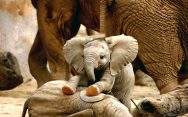
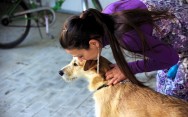

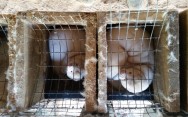
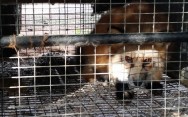
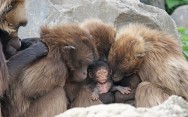
Social Media